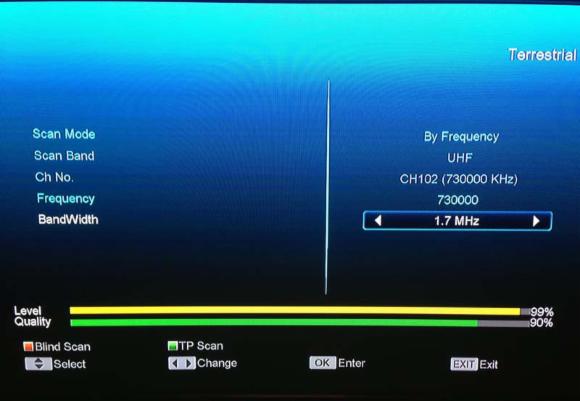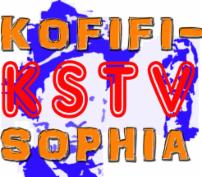Kofifi-Sophia-TV and WECODEC DIGITAL
Introduction
Our daily challenge is staying ahead of the pack in an increasingly complex and competitive media environment that has larger footprints than that of Kofifi FM. Also in a market that probably boost more affluent communities than that of Kofifi. This takes insight, skill, passion and dedication.
However, it is managements’ job to bring together diverse and integrated talents, disciplines, enterprises and business partners who are able to see the opportunities available to them and to create new opportunities. The radio community station is up and running and is poised to attract more advertising and sponsorship and management can legally give a mandate for a professional to employed and source and grow the advertising section of both the radio and digital television stations.
The founders and executives of the radio station have for a number of years been exploring the possibility of expanding into community television to cover a currently marginalized section of the Gauteng market. Further, they have achieved to introduce a brand new digital television technology to South Africa which will enable community television to survive in the digital age irrespectively of their size or budgets. A digital television transmitter has already been installed in cooperation with an international supplier who has committed himself to support the community and transfer the technology and skills to the community.
After the transmission equipment has already successfully proven its functionality, now the rest of the value chain needs will be established such as the studio which entails 3 cameras, edit facilities, virtual and real sets, as well as a playout/final control centre.
The new concept will also include the integration of Radio and TV in a converged environment where e.g. the Morning Show and Afternoon Show double whammy on radio and on TV talk shows people can view and listen.
The Radio station will also benefit by going onto the digital platform as pure sound broadcasting service which can also be positioned on other digital multiplexes within the trial. From there it can reach further audiences and will attract a lot of attention being as innovative as operating the first individually transmitted digital community television station making history worldwide. It will also focus on educational programs to promote digital media technology towards the community.
Kofifi FM personnel understand that technology is the tool to unleash the creative potential of content. It is this spirit of ingenuity that makes a true African digital multimedia community pioneer. We believe that in the television business, you have nothing without a strong creative core. We further believe in the skills and technique required to bring the creative impulse to life. That is why we place such a big emphasis on skills development and training.
Innovation Impact
South Africa as well as most African countries is in the process of migrating its terrestrial television broadcasting from analogue to digital broadcasting, this is an obligation from the ITU (International Telecommunications Union). This migration comes along with a lot of advantages to the broadcasting sector such as a larger variety of television programmes, advanced picture and sound quality, additional information services, better energy efficiency etc., however a very significant component of the broadcast landscape (community TV broadcasting), has been left out.
Compared with the analogue system, digital TV can simultaneously accommodate up to 20 television channels on one frequency instead of only one. On the downside, all these channels have to share the same footprint as they are broadcasted from the same transmitter and antenna arrangement. Apart from ICASA, the introduction of an adequate technology utilization to cater for individual footprints such as provided by analogue low power transmitters and required for community TV broadcasting has not yet been seriously taken into account by any of the involved organizations.
After the last Public Hearings on ICASA’s recent publication on DTT regulations where this requirement was again outlined, a solution was provided which utilizes a different spectrum and bandwidth allocation (Narrow Band). Due to the increased efficiency and performance of the new digital system, the identified spectrum capacity (previously only sufficient for radio) is now able to allow the transmission of digital television programmes.
Thanks to its existing technology platform (self-operated FM transmitter), environmental facilities, as well as its target audience area and many other factors, KOFIFI-SOPHIA TV has been given the opportunity by the Independent Communication Authority of South Africa (ICASA) to host the proof of concept where the first television signal ever in the world will utilize this new concept of digital broadcasting which will revolutionize the shape of digital broadcasting in South Africa, Africa and the world.
The South African region will be recognized as a strong innovation hub and skills development platform with a lot of education, science and employment opportunities in the information and communication technology industry even besides the media sector. With its location in the reach of many of South Africa’s major universities such as Wits, UJ and UNISA it has a potential to be an attraction for local graduates and students, as well as careers and investment development inside and outside South Africa and reach international acknowledgement.
Digital Terrestrial Television Broadcasting Coverage
Westbury and Surrounding Area: Broadcast Footprint 
The above coverage maps show the estimated footprint of KOFIFI-SOPHIA TV in its first stage. At a later stage the whole of greater Johannesburg could be covered with a VHF Narrowband transmission from Brixton or Hillbrow tower.
Phase One (as shown in the map) is illuminated by one 210W L-Band transmitter, feeding an omnidirectional vertically polarized antenna with 7dB gain, resulting in 1.1kW ERP or 1.7kW EIRP.
The Westbury Community Development Centre will be the Hub Station for this innovative Digital Television Project.
TRANSMISSION / BROADCAST
A Transmitter has been installed at the Rahima Moosa Nurses Hostel at Rahima Moosa Hospital premises. The transmission signal is currently broadcasted digitally (DVB-T2 Narrowband=1.7MHz bandwidth) on Channel LN in the L-Band. This signal will be received via a digital DVB-T2 decoder e.g. a Set-Top-Box which has enabled to receive signals of 1.7MHz bandwidth. In order to tune into the L-Band, a simple downconverter which can be manufactured 100% in South Africa for approximately R100 is connected to the decoder. 
The broadcast transmission of Phase One will cover Westbury, Sophiatown, New Canada, Noordgesig, as well as parts of Soweto, Florida and other surrounding areas. In further phases, additional transmitters can be installed and linked to the network to extend the footprint.
The Set-Top-Box used in the trial is already equipped with the actual DVB-T2 chipset which complies with the full standard implementation including 1.7MHz bandwidth.
(Picture taken from TV screen in laboratory) 
Initially, television decoders and screens are to be installed throughout the community to attract awareness of the channel – Locations of Digital Screens within the community.

